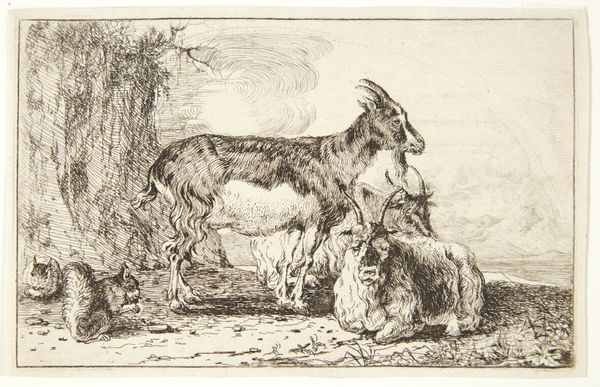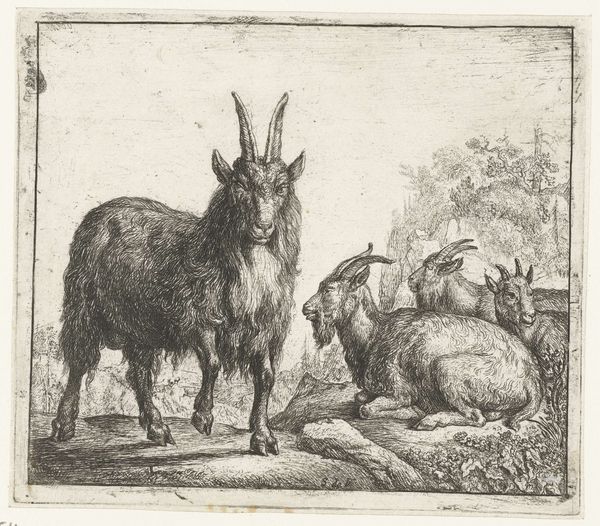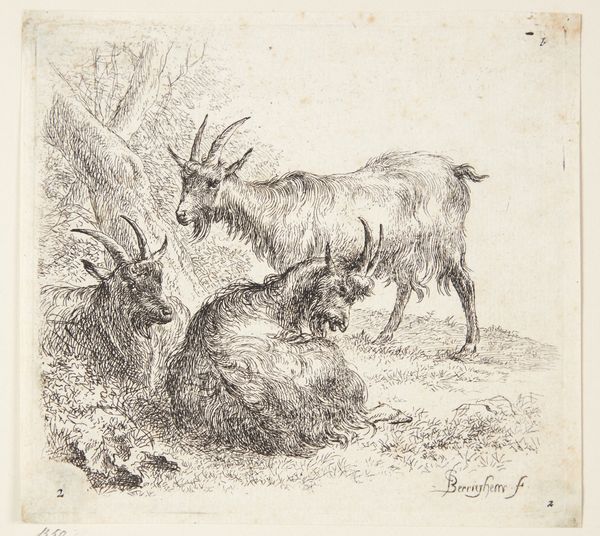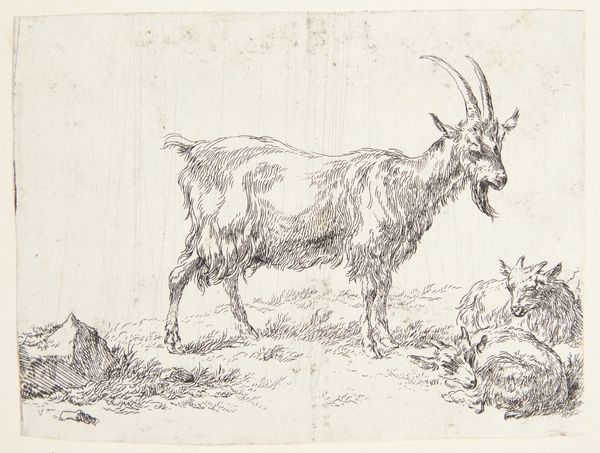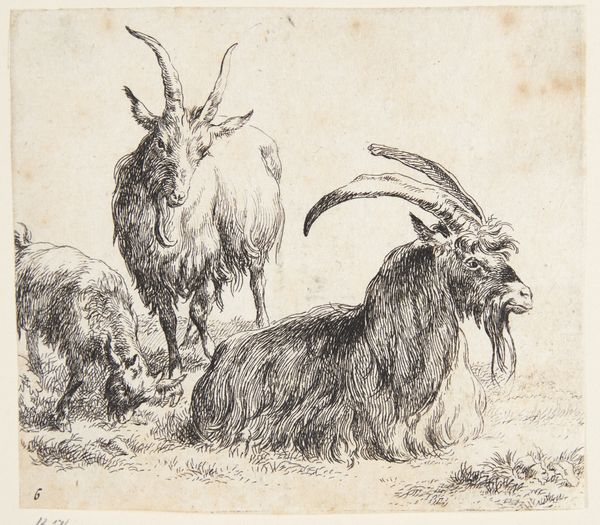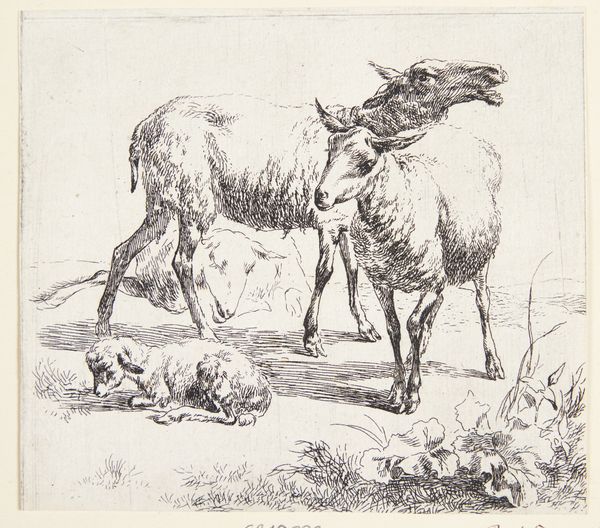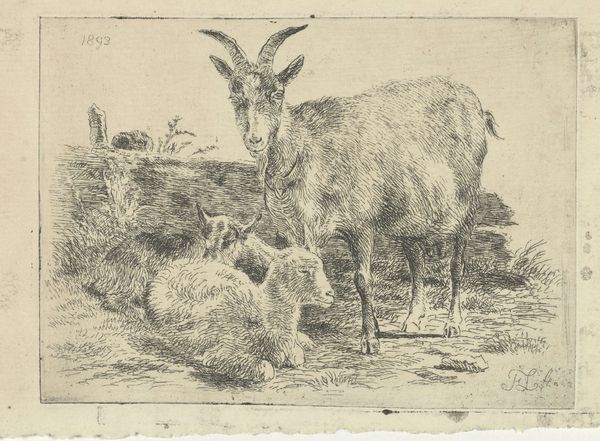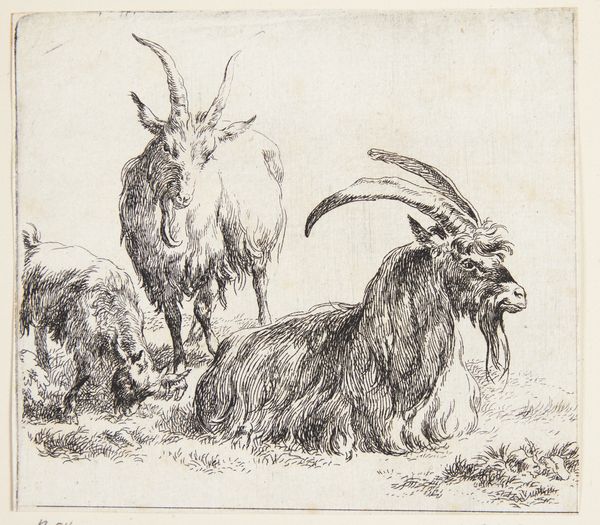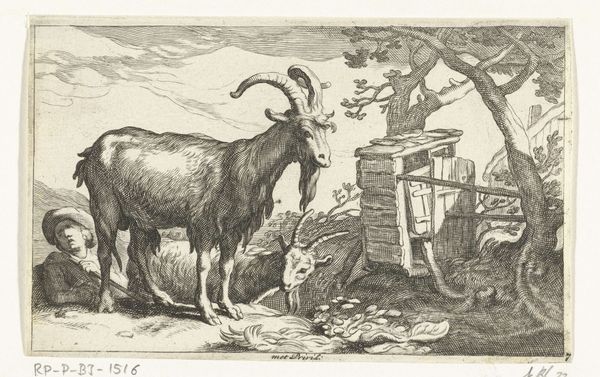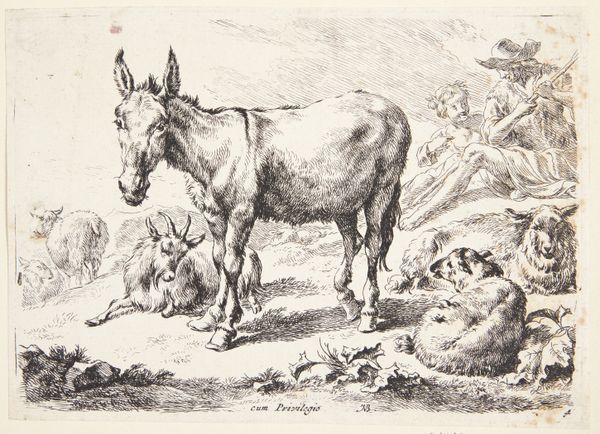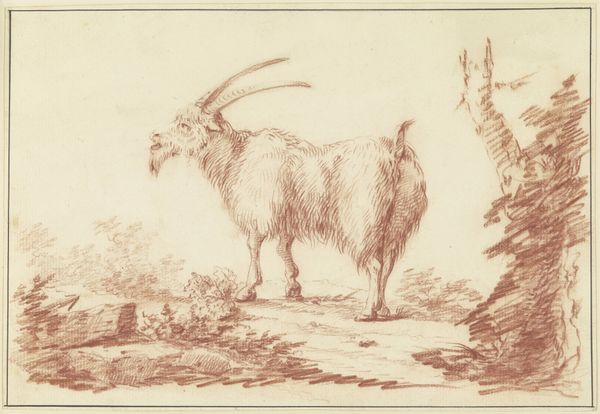
etching
#
ink drawing
#
animal
#
dutch-golden-age
#
etching
#
landscape
#
figuration
Dimensions: 103 mm (height) x 160 mm (width) (plademaal)
Editor: This etching, titled "Geder," by Jan van den Hecke I, created sometime between 1619 and 1684, is fascinating. I'm immediately struck by the detail rendered in simple etching and ink; it's mostly animals but still somehow reads like a Dutch landscape of the period. How might we consider it today? Curator: Well, consider the labour involved in creating such a detailed etching. The process of creating the plate, applying the resist, etching the lines, and then the printing itself--it's a craft as much as a piece of "fine art". Do you see any implications from the animals themselves? Editor: Yes! The goats certainly feel posed, almost anthropomorphic. Is the positioning within the landscape offering social commentary? Curator: Possibly. Etchings like these were commodities, reproduced and distributed widely. These images could be a commentary on rural labour, class dynamics, or even trade networks through animal husbandry during the Dutch Golden Age. Who was buying them, how much did they cost? Think about it; this goat, multiplied across editions, ends up in homes, shaping ideas and aesthetic values. What’s your take? Editor: It's interesting to think about how accessible art forms like etchings could have been formative in the development of societal viewpoints – they would not have been limited to the elite. Considering the medium and distribution really sheds light on its cultural impact. Curator: Exactly. Materiality matters. Recognizing how something is made and consumed is vital to grasping its true meaning and potential effects. I am glad that we had the opportunity to consider "Geder" together.
Comments
No comments
Be the first to comment and join the conversation on the ultimate creative platform.
